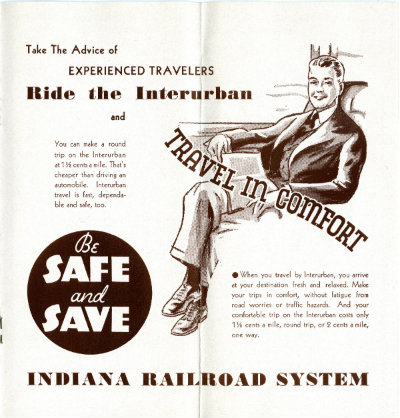Transport Challenges in Rural Indiana
When V. Dimitra Pyrialakou, a doctoral candidate focusing on transportation engineering, moved to the United States from Greece, she was astonished by the many differences between European and American transportation systems and planning practices, especially in rural and small urban areas.
Now, she is working to rethink such areas.
“Dimitra’s dissertation research on assessing passenger transportation options for rural and small urban areas and conducting a multimodal, multi-objective systems evaluation is timely and can contribute to the current debate on whether to invest in commuter rail and high-speed rail in the U.S.,” said Nadia Gkritza, associate professor of civil engineering and agricultural and biological engineering at Purdue. “I have been impressed with her approach to technical problems, professionalism, and attention to detail.”
According to the U.S. Department of Transportation, Americans make nearly four trips per day, traveling a total of just over 36 miles. How do we make these trips? Eighty-three percent of them are by private automobile. In rural areas, the use of autos rises to almost 89 percent.
Access to transportation options is a crucial goal worldwide to benefit quality of life and to ensure equal access to basic needs. Because rural areas frequently lack such options, some studies have concluded that the choice and ability to own an automobile actually shapes rural residents’ quality of life.
Once famous for rail transportation, Indiana had the first Union Station in the world and one of the most developed and luxurious interurban rail systems in the U.S. Advances in technology and highway and aviation networks left the state with only limited passenger rail service.
Even the Hoosier State Line, which has been a mainstay of operation between Indianapolis and Chicago since 1980, is in danger of elimination.
Pyrialakou’s work focuses on a comprehensive assessment of public transportation in U.S. rural and small urban areas, both in terms of existing opportunities and future directions.
Under the mentorship of Gkritza, Pyrialakou developed a three-part research framework that involves the assessment of transport disadvantage, evaluation of existing transportation modes and investigation of the potential for a mode shift to public transportation. The first part is complete and work on the others progresses.
“A main goal of my study,” Pyrialakou says, “is to capture both the thoughts of Indiana’s residents and the willingness of the many stakeholders involved to support rural and interurban public transportation. Through my work, I would like to offer something back to the community in which I am living and studying."

Advertisement for the Interurban System in Indiana. Indiana Railroad, 1936, Indiana Railroad System., Indiana Railroad System, Indianapolis, Ind. Courtesy of Purdue University Libraries, Karnes Archives & Special Collections.
Dimitra’s work was also featured in the last two editions of Indiana High Speed Rail All Aboard Newsletter. Below are links to the newsletters, as well as a direct link to the survey she has developed:
• August Newsletter
• September Newsletter
• Take the Survey – https://purdue.qualtrics.com/SE/?SID=SV_bruvGrz4aZ46VHn
Online resources for more information on this topic:
